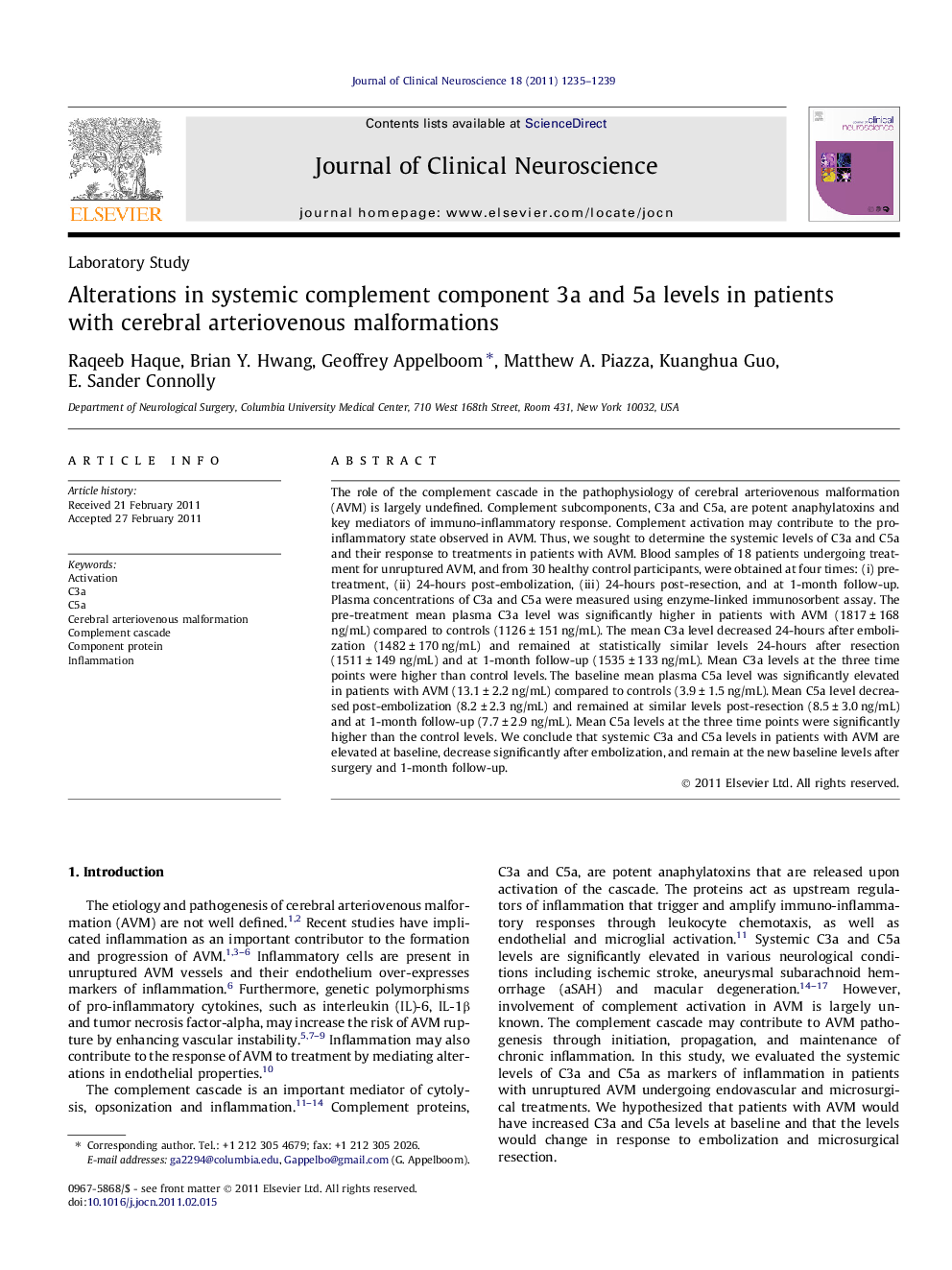| Article ID | Journal | Published Year | Pages | File Type |
|---|---|---|---|---|
| 3060806 | Journal of Clinical Neuroscience | 2011 | 5 Pages |
The role of the complement cascade in the pathophysiology of cerebral arteriovenous malformation (AVM) is largely undefined. Complement subcomponents, C3a and C5a, are potent anaphylatoxins and key mediators of immuno-inflammatory response. Complement activation may contribute to the pro-inflammatory state observed in AVM. Thus, we sought to determine the systemic levels of C3a and C5a and their response to treatments in patients with AVM. Blood samples of 18 patients undergoing treatment for unruptured AVM, and from 30 healthy control participants, were obtained at four times: (i) pre-treatment, (ii) 24-hours post-embolization, (iii) 24-hours post-resection, and at 1-month follow-up. Plasma concentrations of C3a and C5a were measured using enzyme-linked immunosorbent assay. The pre-treatment mean plasma C3a level was significantly higher in patients with AVM (1817 ± 168 ng/mL) compared to controls (1126 ± 151 ng/mL). The mean C3a level decreased 24-hours after embolization (1482 ± 170 ng/mL) and remained at statistically similar levels 24-hours after resection (1511 ± 149 ng/mL) and at 1-month follow-up (1535 ± 133 ng/mL). Mean C3a levels at the three time points were higher than control levels. The baseline mean plasma C5a level was significantly elevated in patients with AVM (13.1 ± 2.2 ng/mL) compared to controls (3.9 ± 1.5 ng/mL). Mean C5a level decreased post-embolization (8.2 ± 2.3 ng/mL) and remained at similar levels post-resection (8.5 ± 3.0 ng/mL) and at 1-month follow-up (7.7 ± 2.9 ng/mL). Mean C5a levels at the three time points were significantly higher than the control levels. We conclude that systemic C3a and C5a levels in patients with AVM are elevated at baseline, decrease significantly after embolization, and remain at the new baseline levels after surgery and 1-month follow-up.
